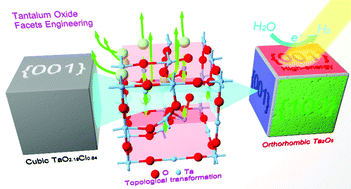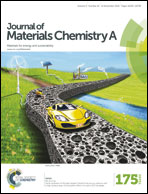Highly active Ta2O5 microcubic single crystals: facet energy calculation, facile fabrication and enhanced photocatalytic activity of hydrogen production†
Abstract
This work has identified Ta2O5 {001} facets as the high-energy facet by first-principles theory, and demonstrated the first example of tantalum oxide facet engineering. Ta2O5 microcubic single crystals (MCSCs) with a large percentage exposure of highly active facets take advantage of the unique crystal structure and cubic morphology of the precursor tantalum oxychlorides, as well as the characteristics of a topological transformation synthesis. In our protocol, the heat treatment of the TaO2.18Cl0.64 microcube precursor only enables an intra-layer transition but preserves the {001} facets due to the strong 180° Ta–O–Ta structure between layers. Consequently, mesoporous Ta2O5 MCSCs with high-energy facet exposure are produced. The as-obtained Ta2O5 MCSCs exhibit a remarkably enhanced photocatalytic hydrogen production activity for their specific surface area due to the enlarged percentage of exposed {001} facets, which possess the largest density and highest quality of hyperactive sites for the photocatalytic reaction. The results here may provide a plausible approach for both the facet engineering of metal oxides with similar layer structures and the enhancement of Ta2O5 chemical activities.



 Please wait while we load your content...
Please wait while we load your content...